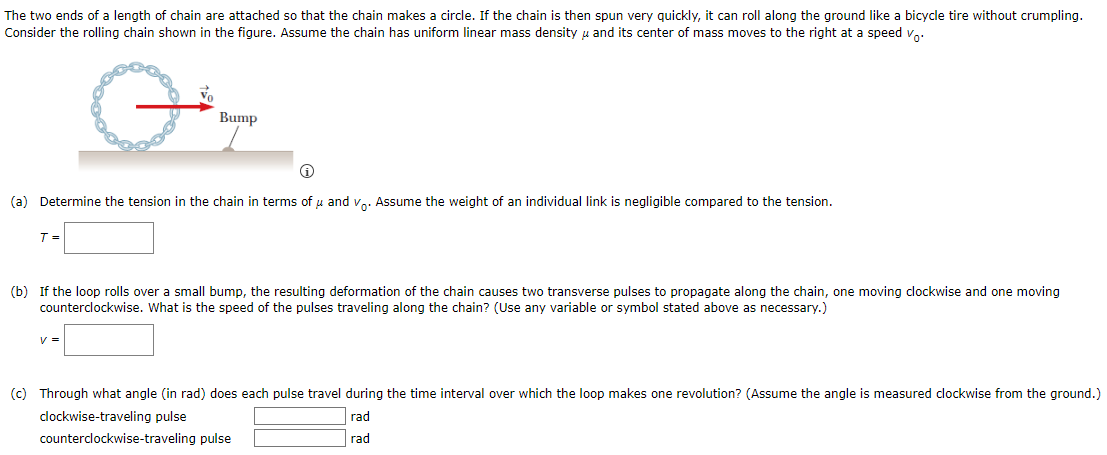The two ends of a length of chain are attached so that the chain makes a circle. If the chain is then spun very quickly, it can roll along the ground like a bicycle tire without crumpling. Consider the rolling chain shown in the figure. Assume the chain has uniform linear mass density μ and its center of mass moves to the right at a speed v0. (a) Determine the tension in the chain in terms of μ and v0. Assume the weight of an individual link is negligible compared to the tension. T = (b) If the loop rolls over a small bump, the resulting deformation of the chain causes two transverse pulses to propagate along the chain, one moving clockwise and one moving counterclockwise. What is the speed of the pulses traveling along the chain? (Use any variable or symbol stated above as necessary.) v = (c) Through what angle (in rad) does each pulse travel during the time interval over which the loop makes one revolution? (Assume the angle is measured clockwise from the ground. ) clockwise-traveling pulse rad counterclockwise-traveling pulse rad
